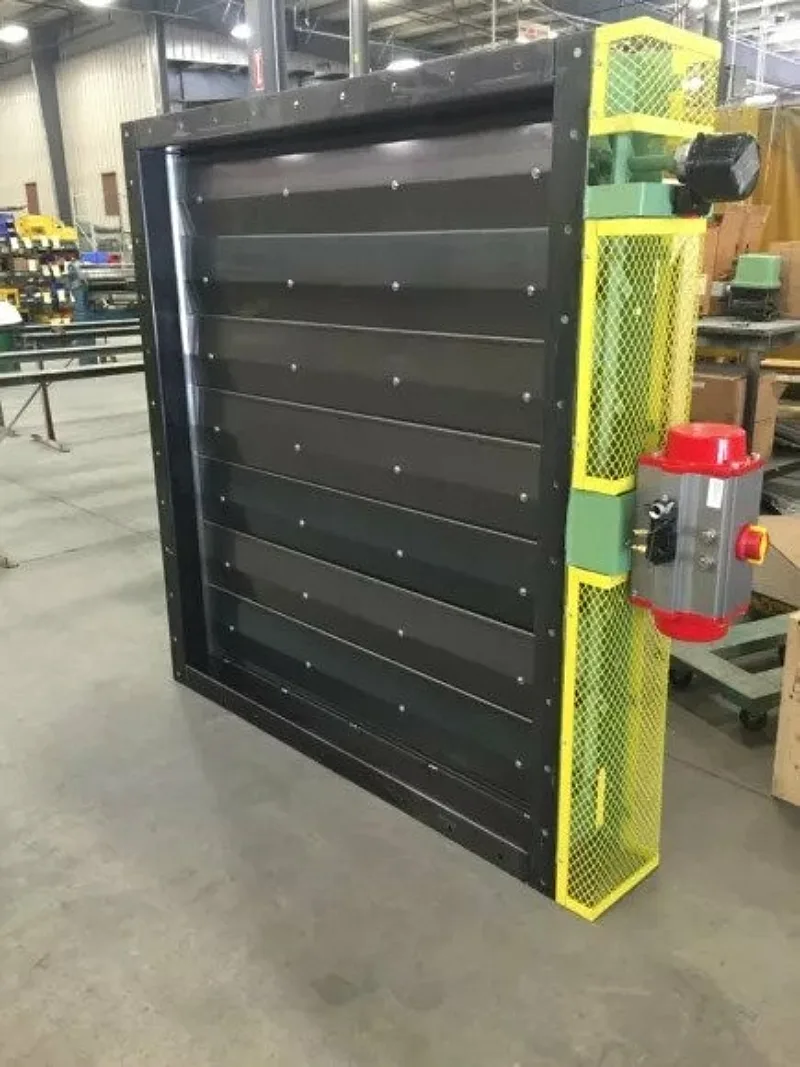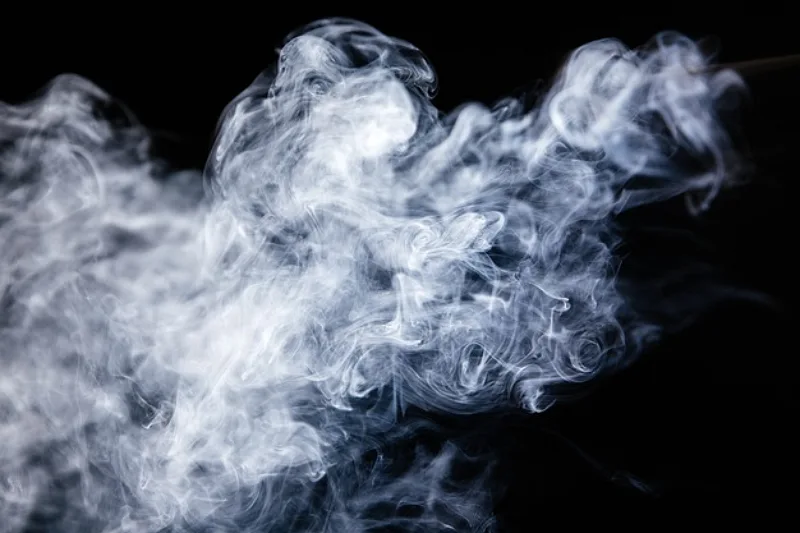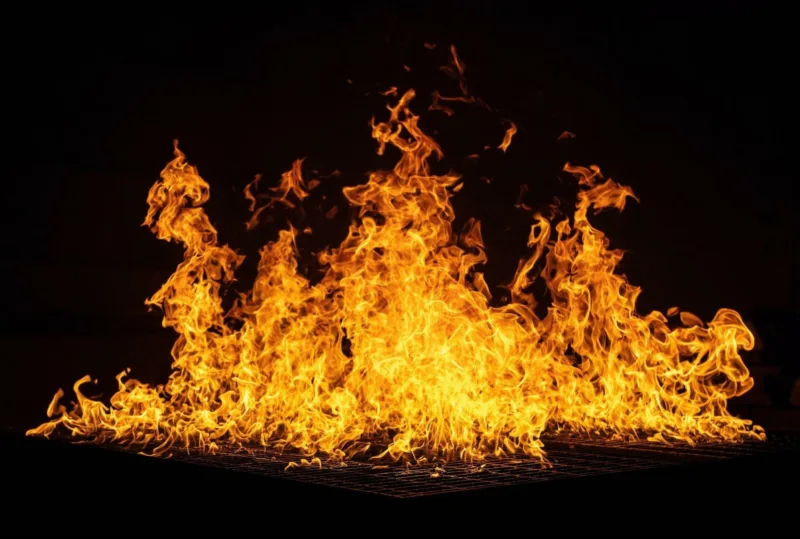When it comes to safety in buildings, it's crucial to have comprehensive fire protection systems in place. Smoke dampers and fire dampers play an integral role. They may seem similar at first glance, but they serve very different purposes in your HVAC system. Understanding the difference between a smoke damper and a fire damper can help you make an informed decision when choosing the right damper for your specific needs.
Understanding Dampers
Dampers are critical devices in HVAC systems. In the context of air control devices, a damper is a valve or plate that stops or regulates the flow of air inside a duct, VAV box, air handler, or other air-handling equipment. For commercial projects, dampers are typically installed in ductwork throughout the system. Dampers can either allow air to flow freely, restrict it partially, or stop it entirely.

Dampers come in various types and some types serve different purposes in the system. Smoke dampers and fire dampers are not built to direct airflow like a standard damper. They are designed to help prevent the spread of fire and smoke in a building. These two damper types are essential components in a building's fire and smoke suppression system.
Fire suppression and control systems are typically broken into active and passive devices. Active devices, like sprinkler systems, work to actively put out a fire once it has started. Passive devices work to minimize the spread. Dampers typically fall into the passive category where they play a critical role. Fire dampers and smoke dampers are both used to protect buildings and occupants in case of a fire. Their design and intended operation is slightly different.
Smoke Dampers: A Closer Look
A smoke damper is designed to prevent the spread of smoke through a building's ductwork. Smoke dampers are equipped with actuators tied to a smoke detector. When the smoke detector senses smoke, it signals the actuator to close the smoke damper. This action prevents the smoke from spreading to other parts of the building via the ductwork, and helps to protect occupants and property.

Smoke dampers are typically installed in smoke barriers and walls. Under certain scenarios, smoke dampers can be reopened to direct captured smoke to unoccupied parts of the building. This can help firefighters safely combat a fire.
Fire Dampers: What You Need to Know
A fire damper, on the other hand, is designed to stop the spread of fire through a building's ductwork. Unlike smoke dampers, which are activated by smoke detectors, fire dampers are activated by heat. The fire damper closes when the temperature in the ductwork exceeds a certain level, typically around 165°F. A fusible link is used to keep the damper in the open position until the link melts and causes the damper to snap closed.
Fire dampers are usually installed in fire-rated walls and floors where ductwork passes through. Fire dampers are integral to compartmentalizing a building and maintaining the integrity of fire-rated barriers. They can be either dynamic or static, depending on whether they are designed to close while the HVAC system is running (dynamic) or when the system is shut off (static). Static dampers rely on the force of gravity to close, while dynamic dampers are typically spring-loaded or electrically-actuated.

Smoke Damper vs. Fire Damper: Spotting the Difference
Now, let's delve into the key differences between a smoke damper and a fire damper. The primary difference lies in their triggering mechanism and the threats they are designed to mitigate.
Triggering Mechanism
As mentioned earlier, smoke dampers are triggered by smoke detectors attached to the actuator, while fire dampers are activated by heat. Combination smoke and fire dampers have devices to detect heat and smoke, and can be triggered to close at the first signs of either hazard.
Threat Mitigation
Smoke dampers are designed to prevent the spread of smoke, while fire dampers are designed to stop the propagation of fire. Smoke dampers will have tighter seals to minimize leakage when fully closed. Look for the damper’s Leakage Rating to determine its effectiveness. Fire dampers must be strong enough to maintain the fire rating of any wall assembly where they are installed. These dampers will have a fire resistance rating of one and a half hours or three hours. This rating should closely match the rating of the barrier receiving the damper.
Location
Smoke dampers are typically installed in smoke barriers, while fire dampers are installed in fire-rated barriers. The fire-rated barriers can be walls, ceilings, floors, or other types of barriers. Fire dampers require breakaway connections to ductwork to ensure the damper stays inside the fire-rated barrier if connected ductwork fails.
Making the Right Choice
In most cases, you will need smoke dampers and fire damper to complete your passive fire protection requirements. Fire dampers and smoke dampers address different aspects of the same danger: a fire event in your building. It's also possible to use combination fire/smoke dampers that can meet the requirements of both types..
For optimal safety, it's essential to regularly inspect, test, and maintain your HVAC dampers. For fire and smoke dampers, local jurisdictions will have mandated schedules for testing and maintaining each UL-rated damper, to ensure they are ready to respond to a fire event.
Choose AWV for Your Damper Solutions
AWV offers a comprehensive range of dampers, louvers, and air control devices, including both smoke dampers and fire dampers. With a history dating back to 1904, AWV is proud of their reputation for quality, durability, and technical expertise.
Whether you need help deciding between a smoke damper or fire damper, or if you are looking for a reliable provider of high-quality air control devices, AWV is here to assist.
Contact the fire and smoke damper experts at AWV today to learn more about their products and how they can help ensure the safety and efficiency of your building's air control system!


